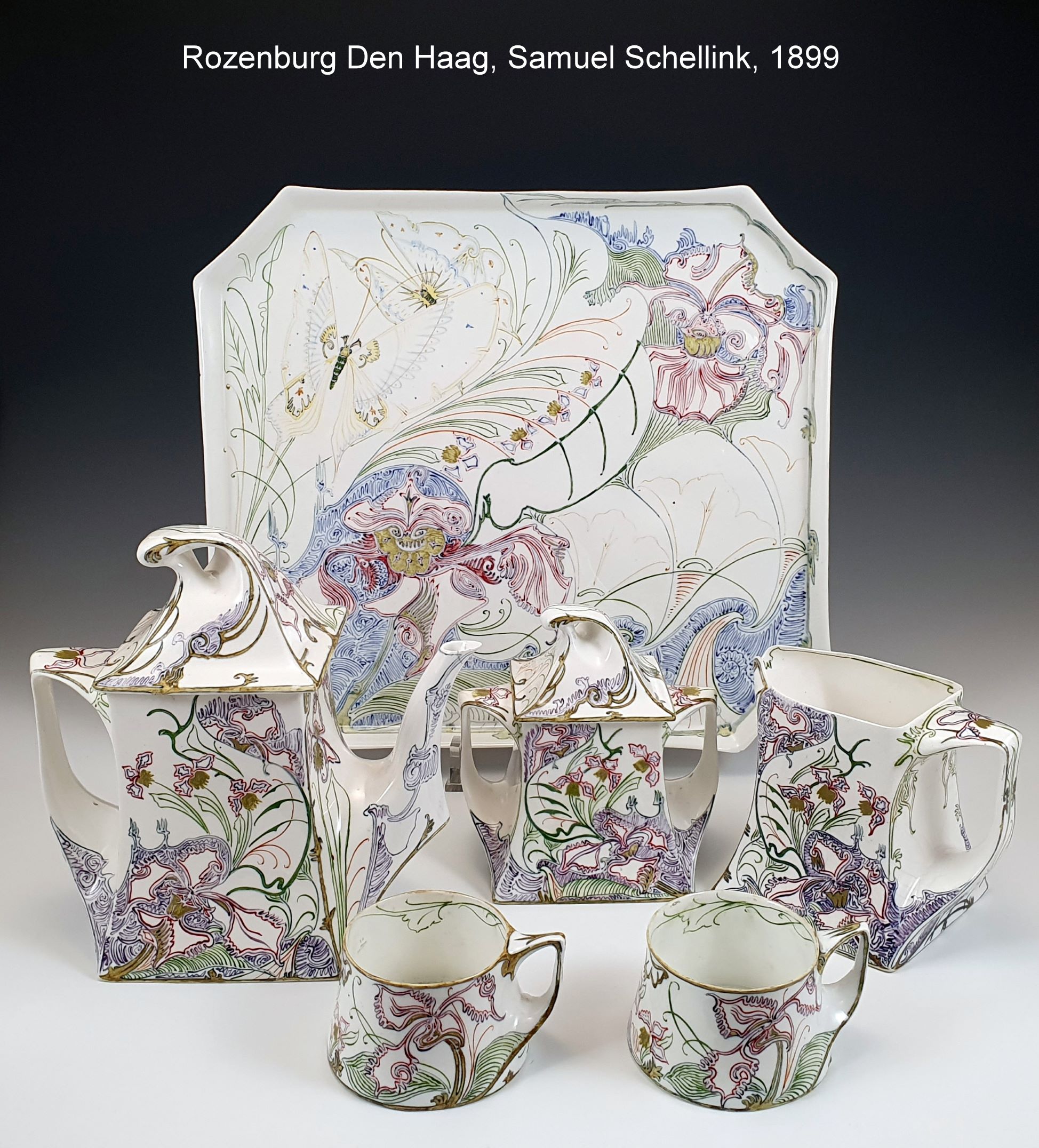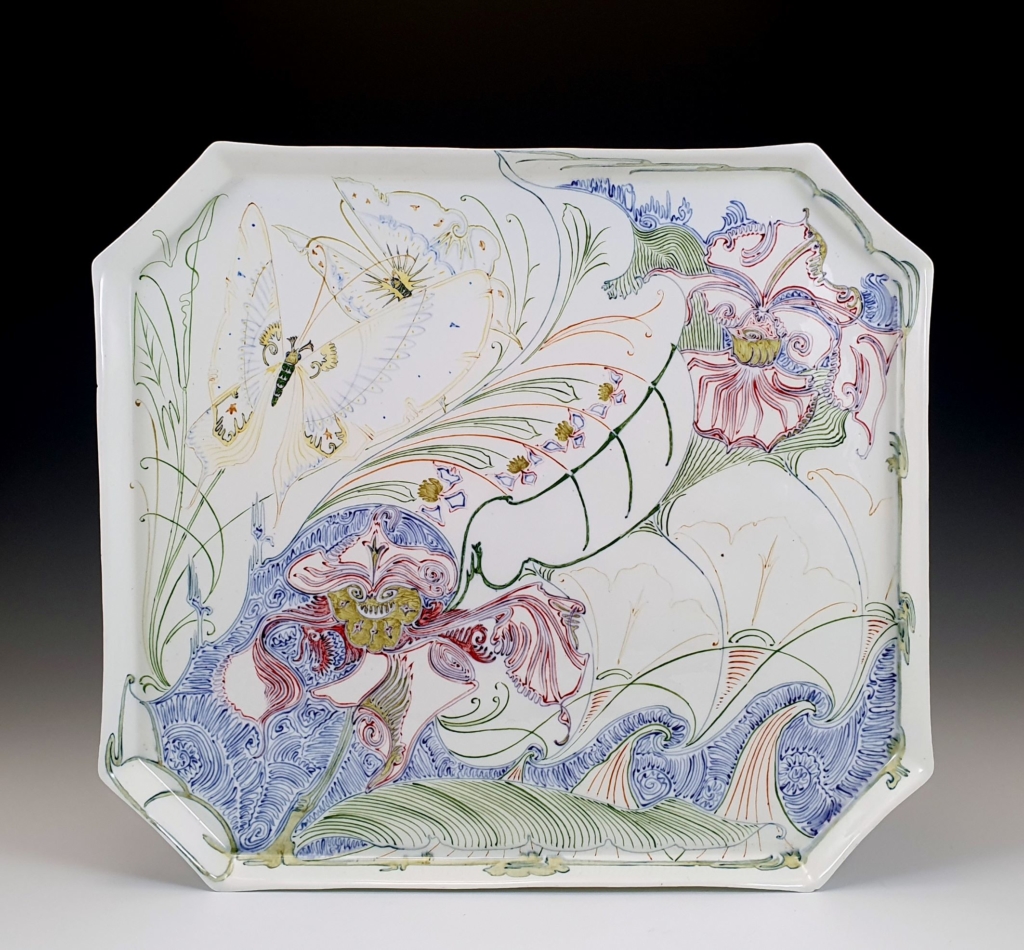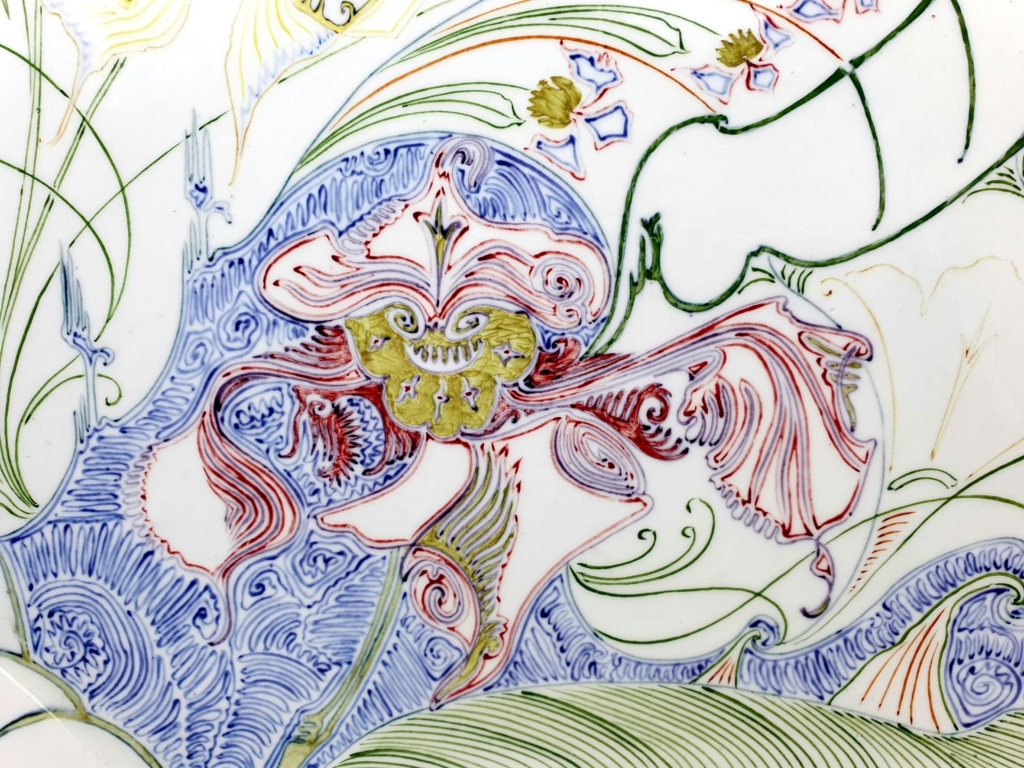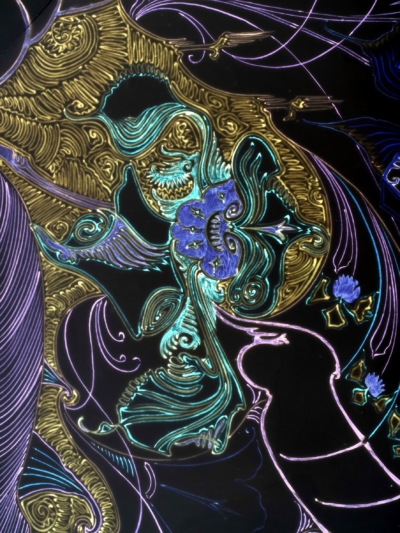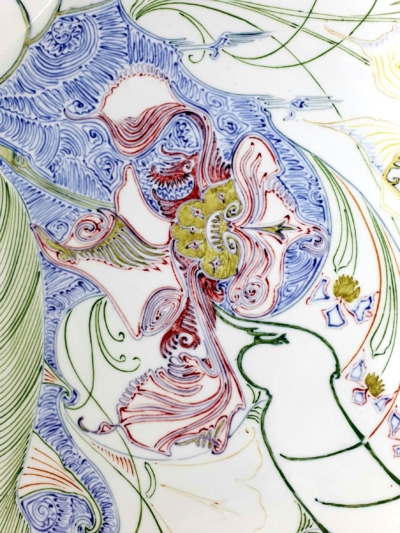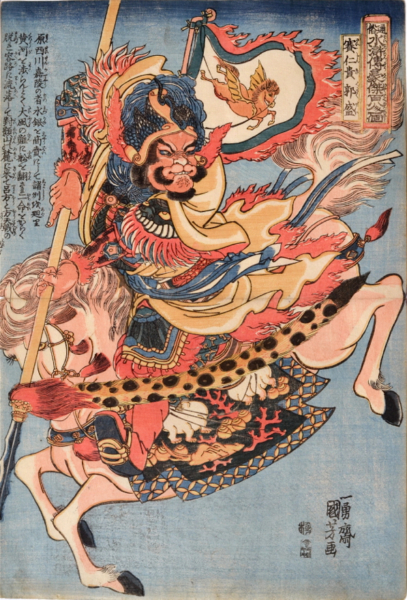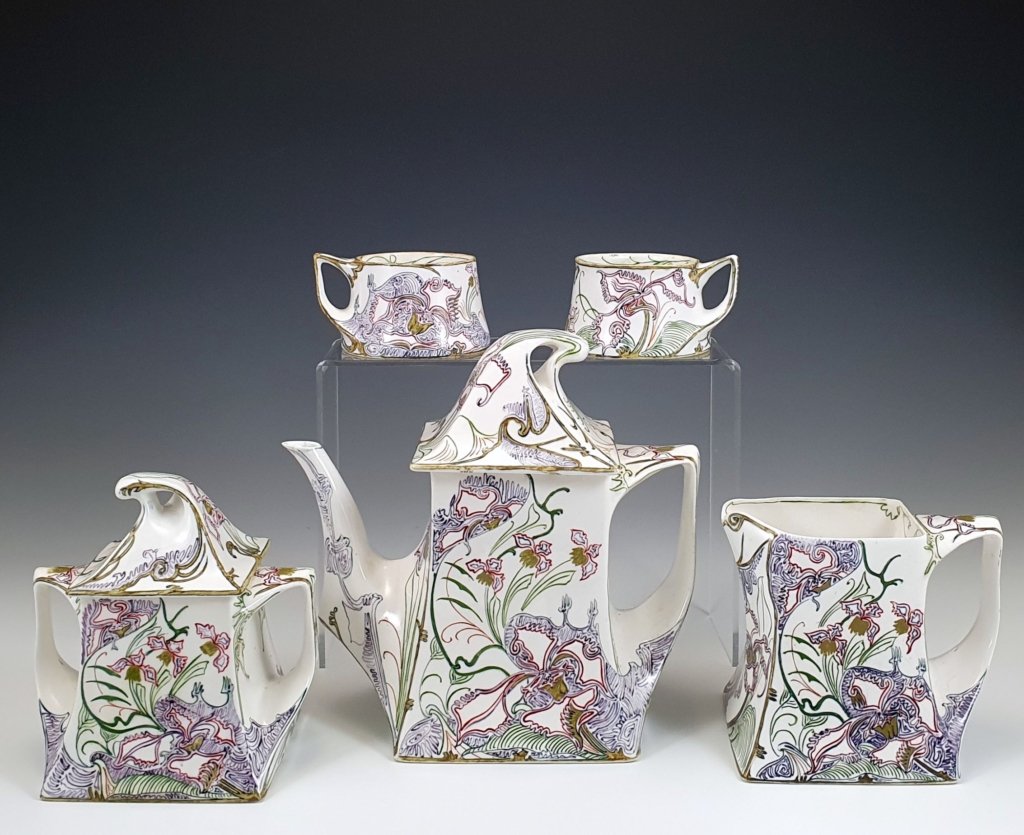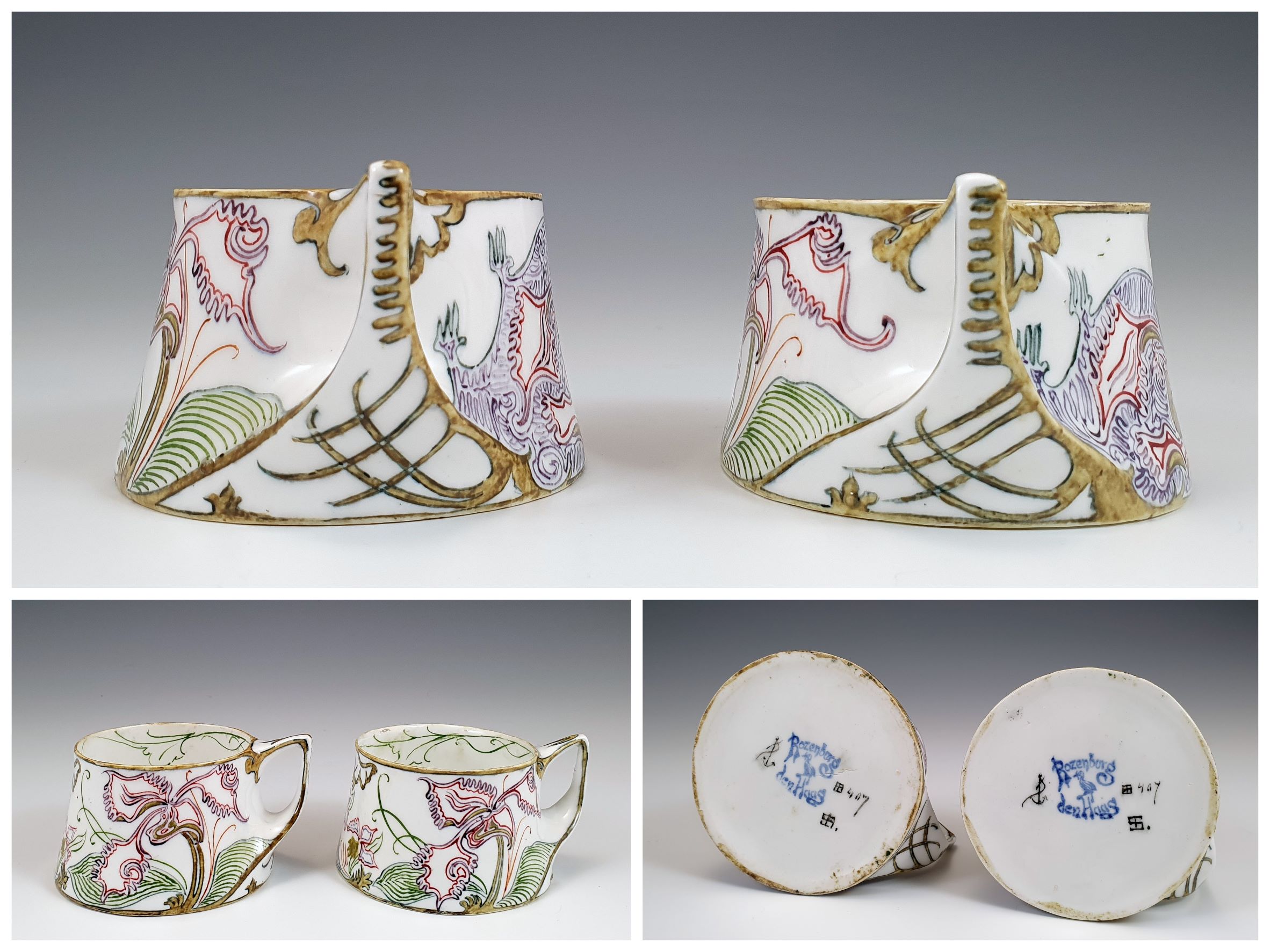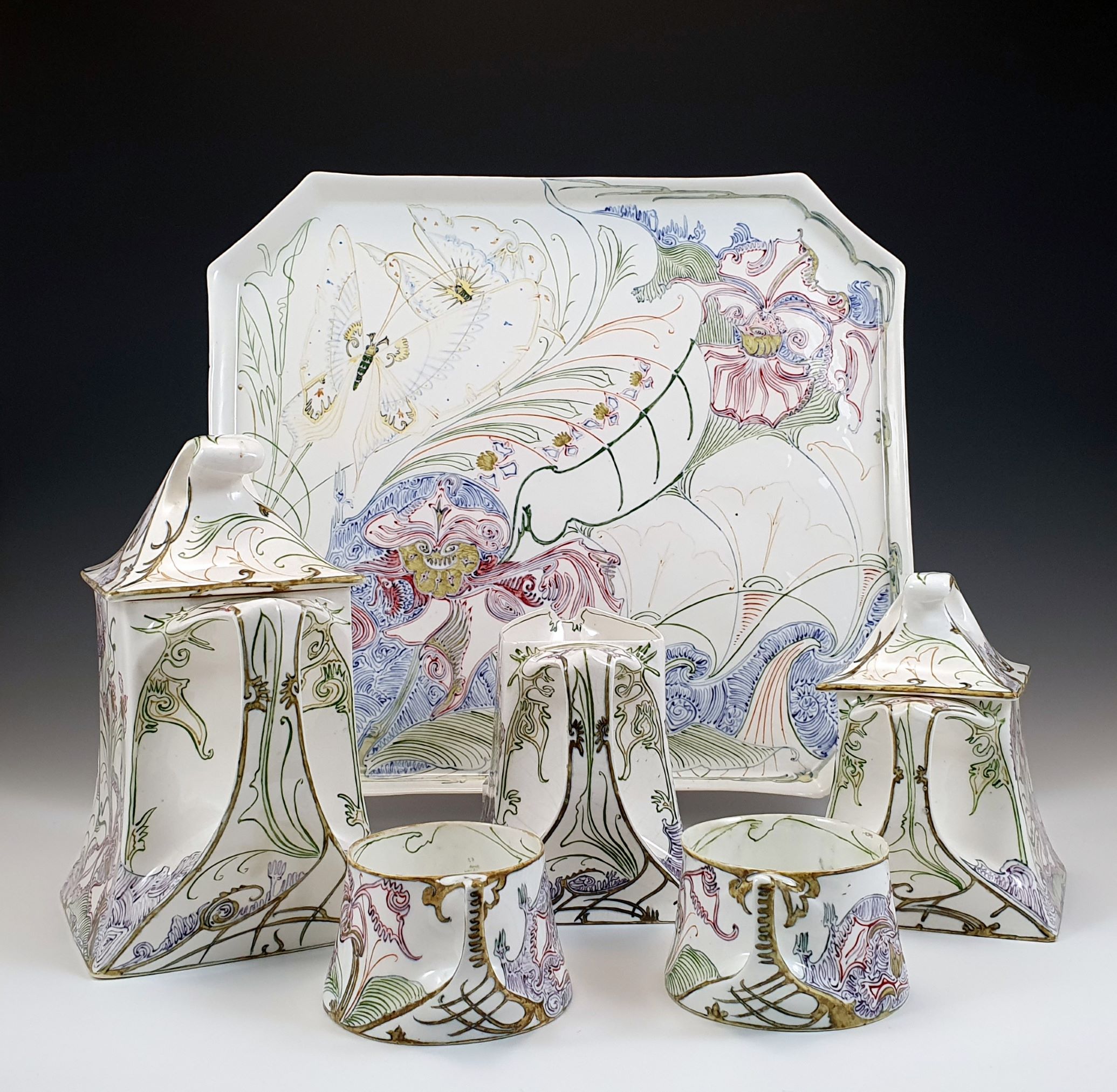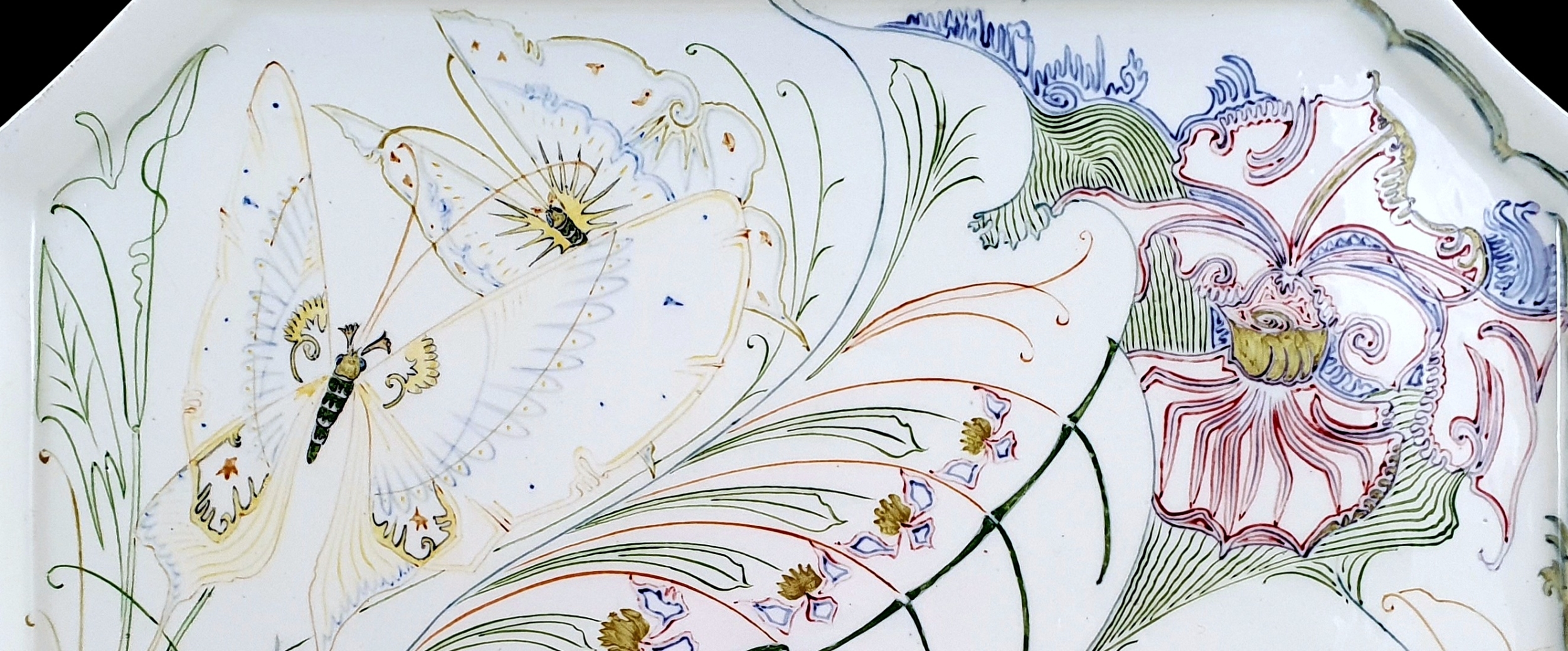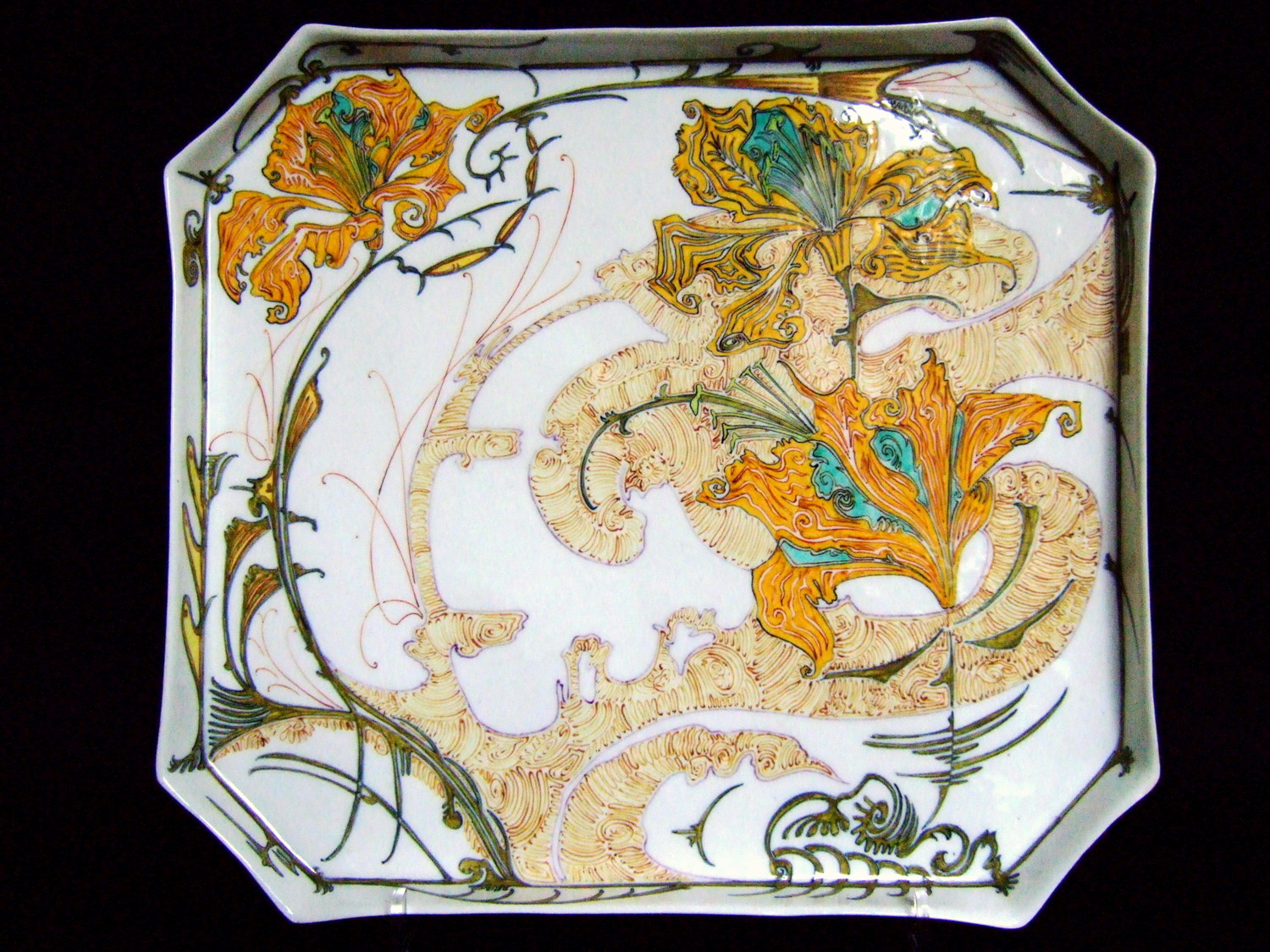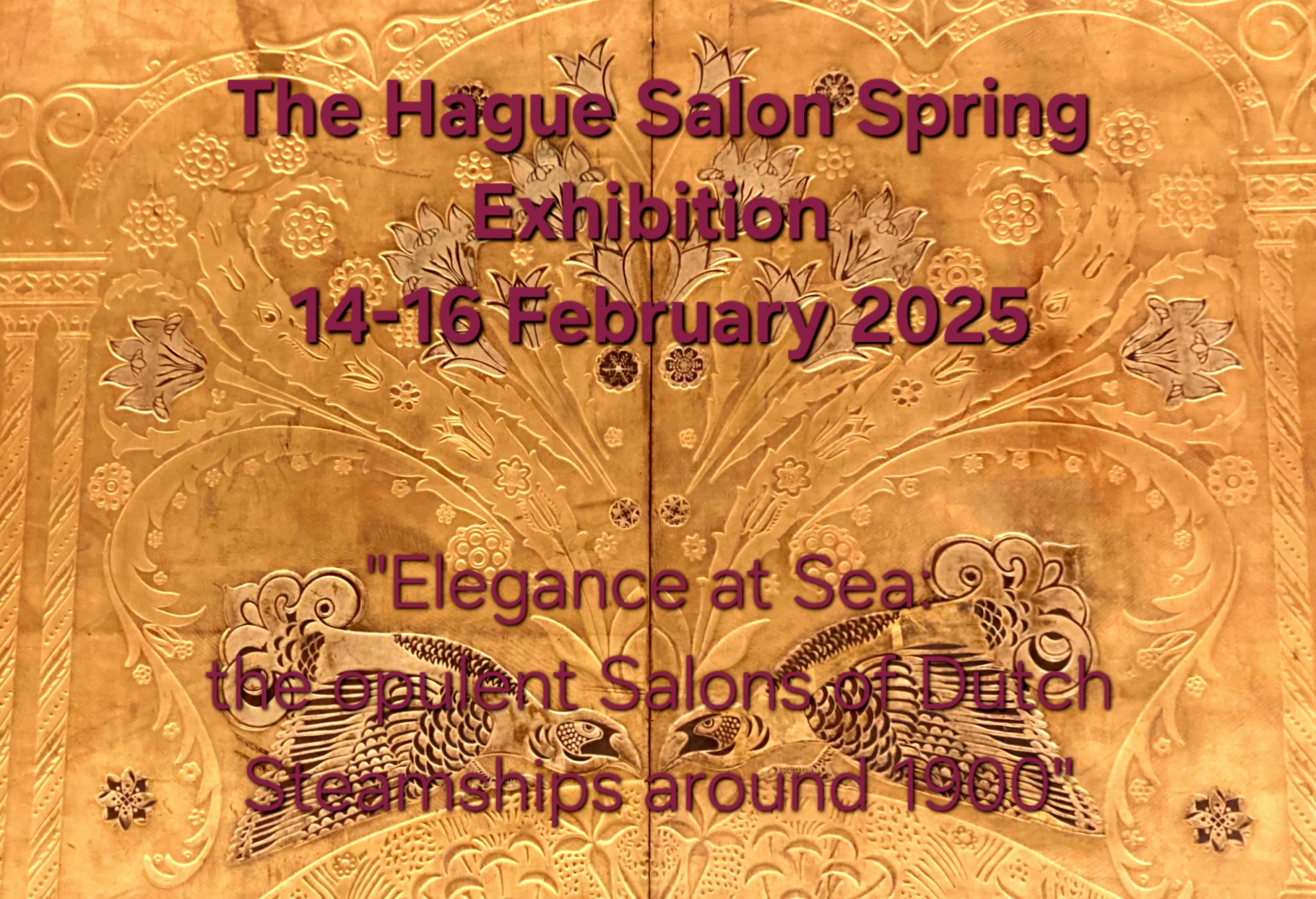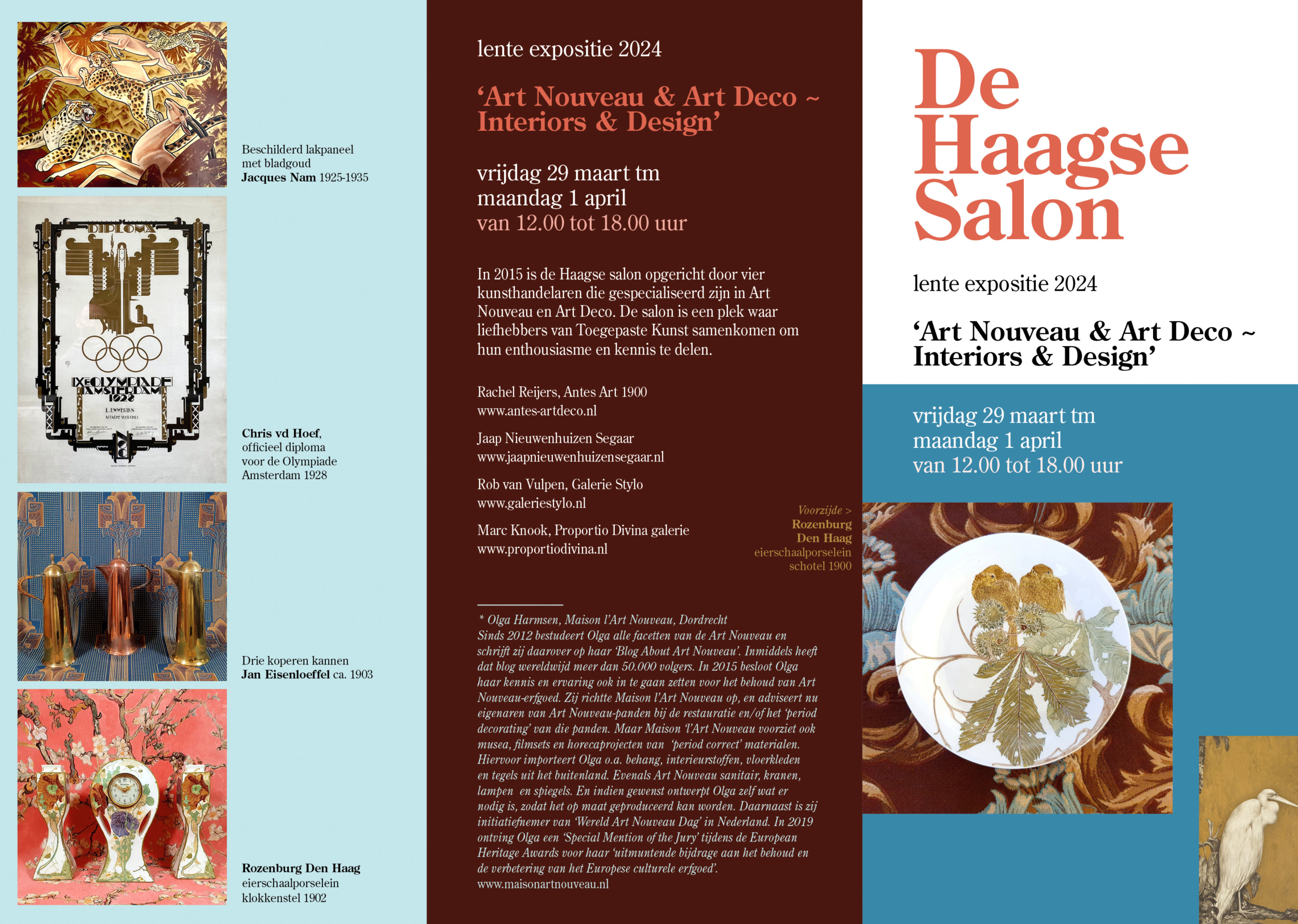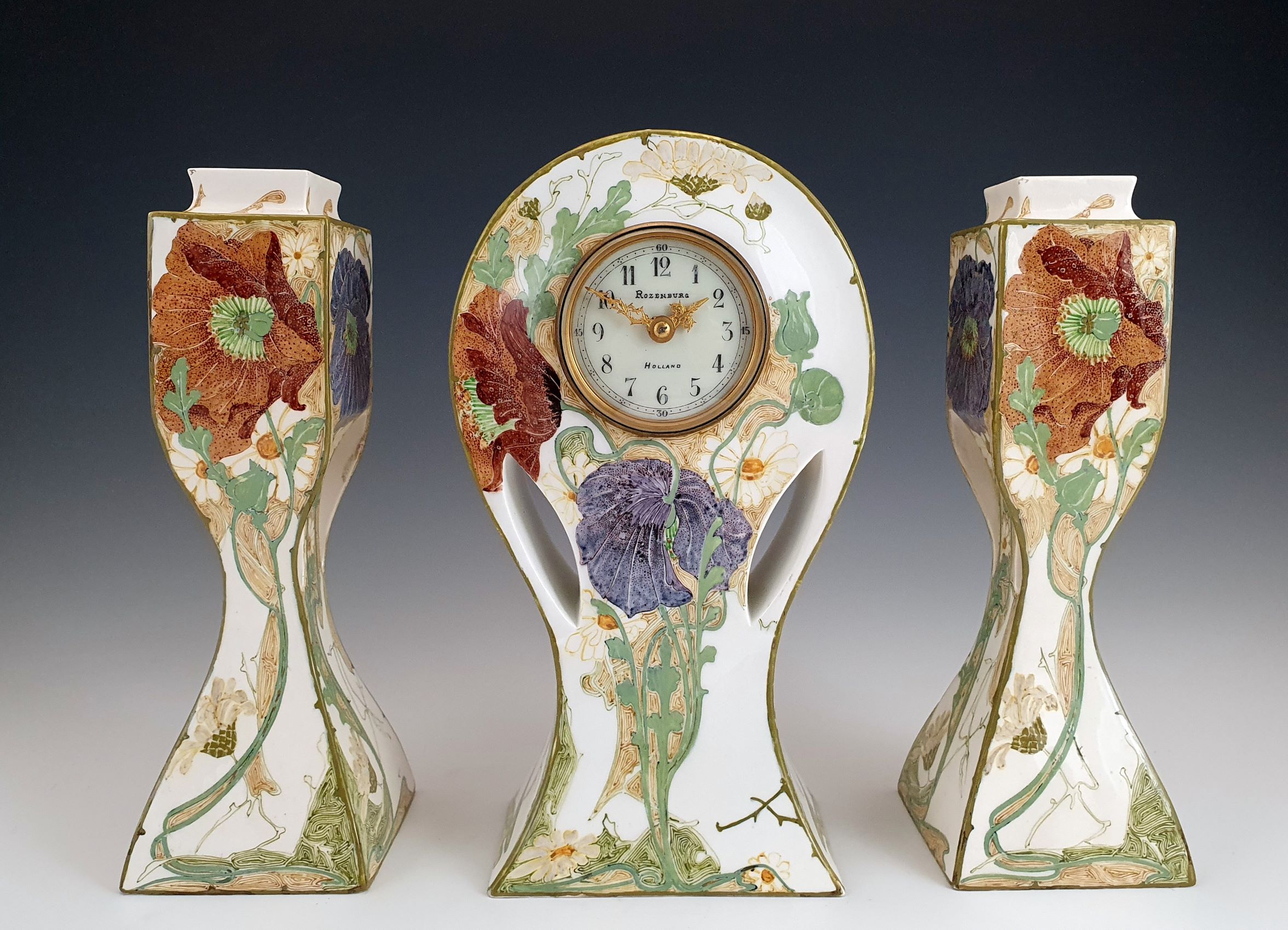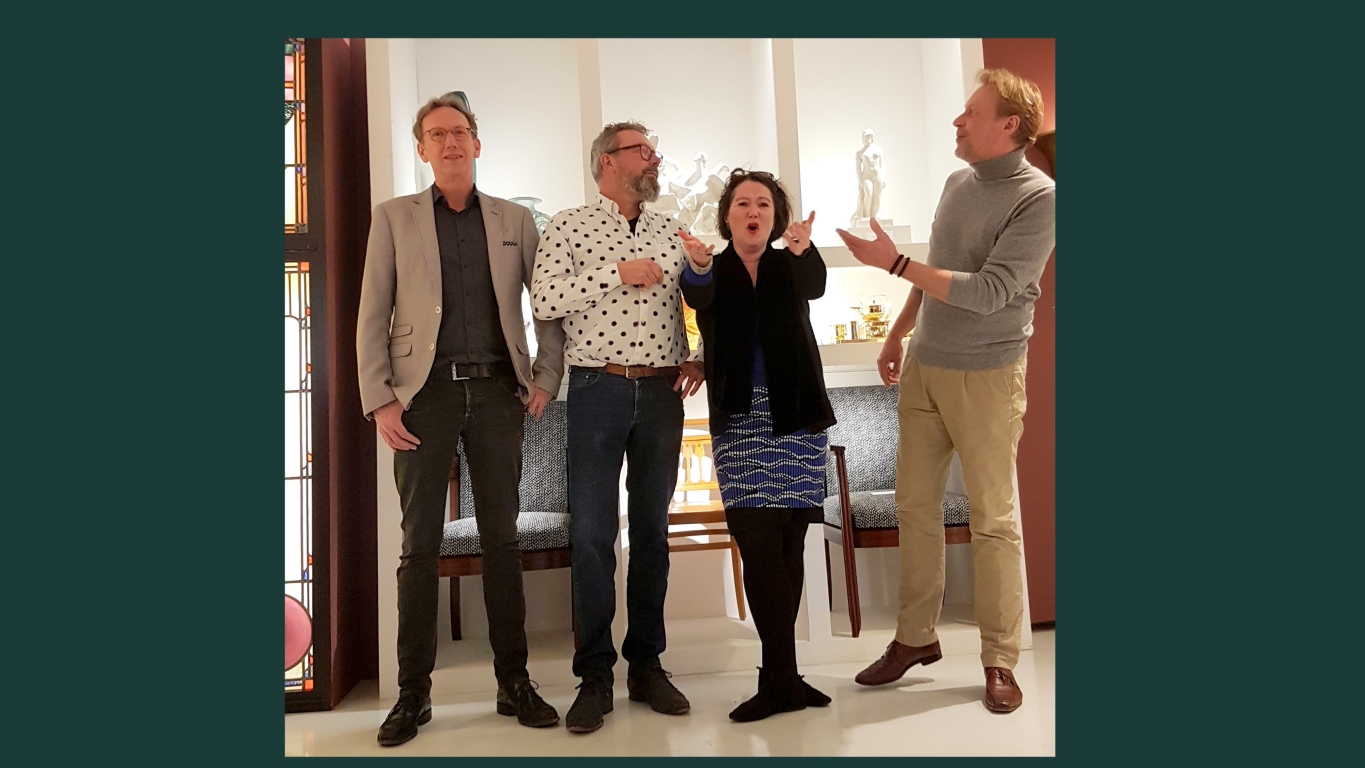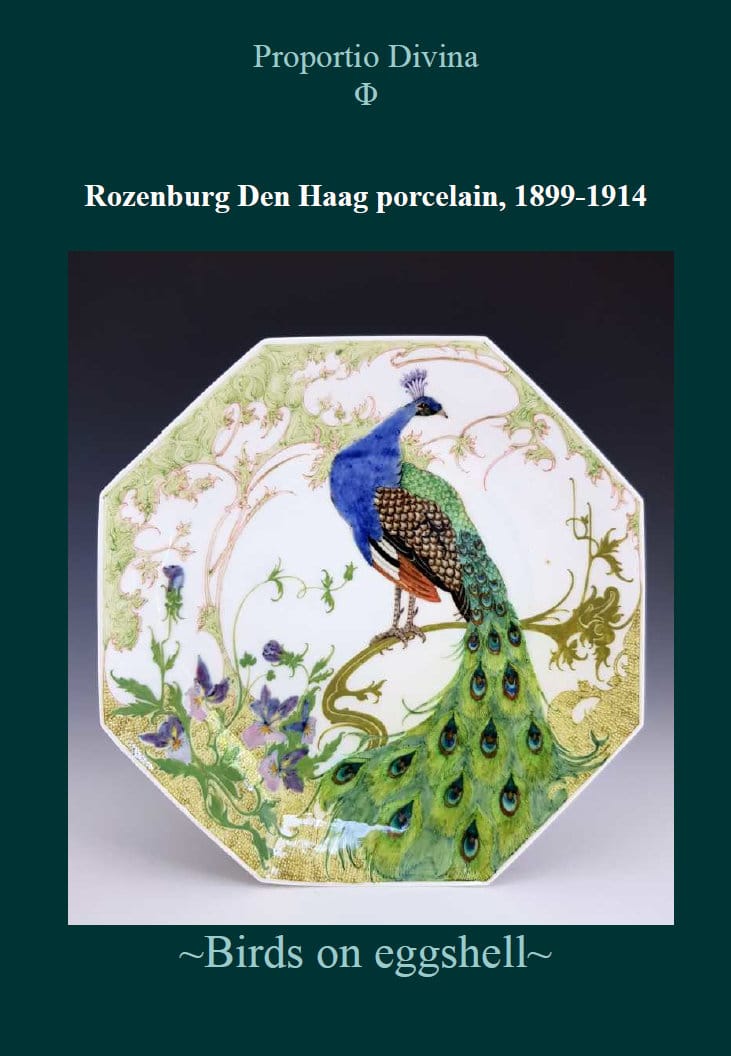Comprises an octagonal tea tray, a teapot with plumed lid,
a sugar bowl with plumed lid, a milk jug and two cups
This is one of the first eggshell porcelain tea services, tea sets, that Rozenburg made, when they started the
production of the, later world famous, eggshell porcelain on March 3, 1899.
More precisely, this set, with work order number 407, was painted by masterpainter Samuel Schellink and apprentice Cornelis Muylwijk, on March 31, 1899.
It was the third set to be painted and intended for presentation at the World’s Fair in Paris to be held the following year.
The unique decoration seems highly inspired by the Japanese woodblock prints by Kuniyoshi and Hokusai. The tray shows two dragontail butterflies, flying over what looks like a waterlandscape, with arum plants on the left and bindweed flowers on the right.
At first glance there appear to be two poured-out orchids, bottom left and top right, on the tray.
This detailed photo of the orchid at the bottom left also shows something else,
namely a (captured?) dragon and a cheerful bearded Japanese warlord:
The dragon is more visible when the picture is turned and even better when the colours are reversed,
see picture on the right:
Utagawa Kuniyoshi (Japanese, 1797–1861). Recovering the Stolen Jewel from the Palace of the Dragon King, The Met New York:
Utagawa Kuniyoshi (1797-1861) The 108 Heroes of the Popular Suikoden: Saijinki Kwakusei,
Armed with a Spear on a Plunging Horse, 1827-1830:
The Rozenburg factory started casting the first porcelain biscuit models in January 1899. The first pieces to be painted were therefore complete sets, consisting mostly of 8 parts: a tray, a tea or coffee pot, sugar bowl, milk jug and two cups and saucers. The main goal was the World Exhibition in Paris, which was to start on April 15, 1900. Publications were mainly about the difficult start-up and the problems of finding the right composition of the porcelain clay. There were also serious problems with the firing of the biscuit, a large part had to be rejected because of warping of the (porcelain)biscuit in the oven. However, little is known about how the Rozenburg painters experienced this run-up and how the well-known decorations came about.
This tea set provides an important clue, an important insight. What is striking about the painting is its free and impressionistic character. The tea tray, in particular, appears to have been painted as if it had been painted on canvas, whereby it should be noted that nothing can be corrected on (porcelain) biscuit; every line stands!
There are elements on the tea tray, such as the recessed arum chalices and the recessed bindweed, which are later used on the porcelain. But the butterflies, rendered so fragile and impressionistically, are unique.
The impression of the almost hidden dragon and Japanese warlord seems to me more of a small built-in joke and experiment by the painter Schellink. This also shows that there was room to experiment and to search for what would eventually become fairly well-defined decors, more naturalistic decors.
The other parts of the tea set are painted in an impressionistic, almost abstract way, with small and large orchids and bindweed flowers on the two lids, between narrow green foliate borders.
Striking is the consistent use of red lines right next to the shaded blue parts and lines. The effect
of this is, that from a distance, the tone, the color, goes more towards mauve. And the color mauve or purple was indeed used in different shades at Rozenburg for decorating pottery. Apparently, with the first pieces of porcelain, the painters were still unsure about how the paint would behave in the pottery kiln. And to be safe, primary colors were apparently chosen, which can also be seen on other pieces from this early period. This was also a new painting technique at the time, which culminated in Pointillism and Divisionism; with Pointillism this effect was achieved by juxtaposing dots of primary colors and with Divisionism by means of lines, whereby, viewed from some distance, the visual effect of a mixed color was achieved.
Not much later in 1899 pieces were painted with purple and mauve
tones and especially from the early 1900’s the use of those tones took off.
A good example of this, is this tea tray from April 1900, which would
also go to the World Fair in Paris: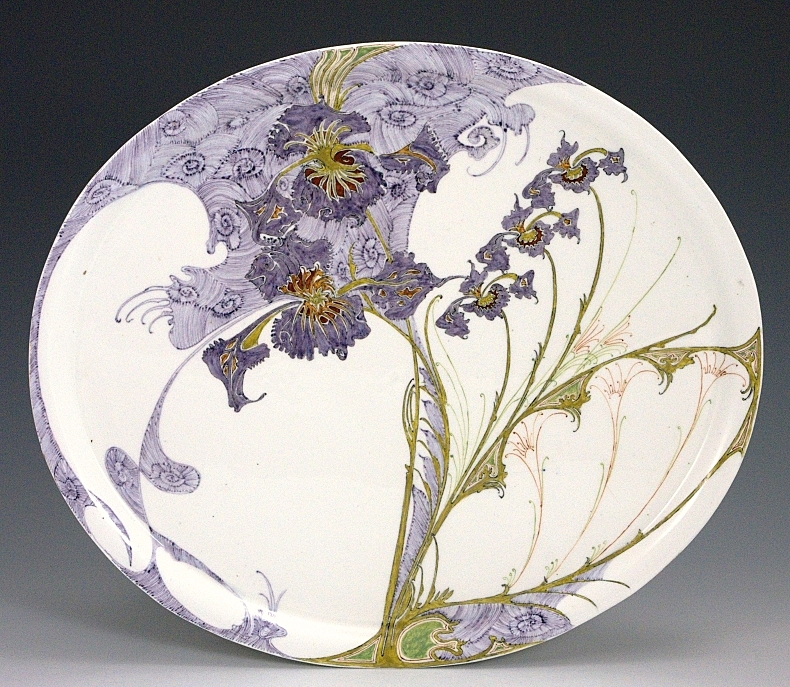
Incidentally, the orchids on this tray have a striking resemblance to the
large orchids on the tray from this set, only more elaborated.
Teapot, model 35p of which altogether only 41 copies were made (during Rozenburgs’ 15 years of porcelain production!):
Another remarkable resemblance to the aforementioned Japanese woodblock prints is the movement, the dynamism that the decor radiates on this service. The water on the tea tray seems to be waving, the orchids on the other parts of the set seem to wave in the wind and the dragontail butterflies float above the landscape. Pure Japonism!
The painter and shareholder of the Rozenburg Factory, Hendrik Willem Mesdag was of great and important influence on the painters of Rozenburg. Especially because as an art collector, towards the end of the 19th century, Mesdag owned an extensive collection of Japanese applied art (see also: https://www.demesdagcollectie.nl/en/plan-your-visit/to-see/past-exhibitions/exhibition-mesdag-japan). A number of Rozenburg painters, including Samuel Schellink, were strongly influenced by this, which is clearly visible on this tea set.
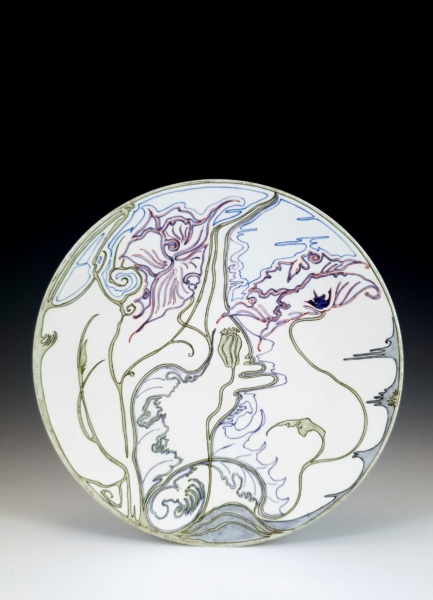
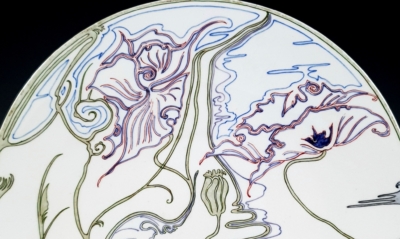
Copy of the Rozenburg 1899 work order book for the painters, work order 407 on March 31:
From which it appears that the tea set originally consisted of: one tea tray model 8p, one teapot model 35p, one milk jug model 36p, two cups model 38p, two saucers model 22p and one sugar bowl model 37p
Below is a copy from Rozenburg’s stock books, which shows that up to December 31, 1899, a total of 5 sets like these, but with a different decor, were painted and intended for the ‘Paris Exhibition’:
Worldwide, few museums have an (almost) complete Rozenburg set in their collection. There are two Dutch museums that have a few such sets, the Rijksmuseum Amsterdam and the Kunstmuseum Den Haag. This is an almost complete set, only the two saucers are missing.
After this tea set was painted in work order number 407 on March 31, the next set would not be painted until April 21, in work order 495. The conclusion was probably reached at the time that painting tea or coffeesets ‘freely’ would take too much time and therefore too much money. The Rozenburg factory also had a classical way of working with master painters, painters, companions and apprentices.
For that reason too, it is more productive to work with ‘fixed’ decors and patterns. This tea tray, also model 8p, is from that order number 495 from almost a month later, and already shows clearly more pattern:
To be continued!
